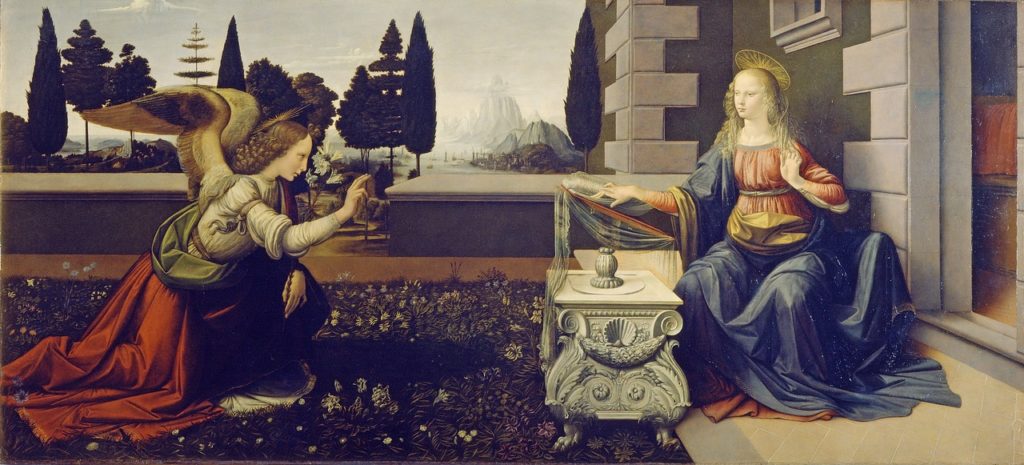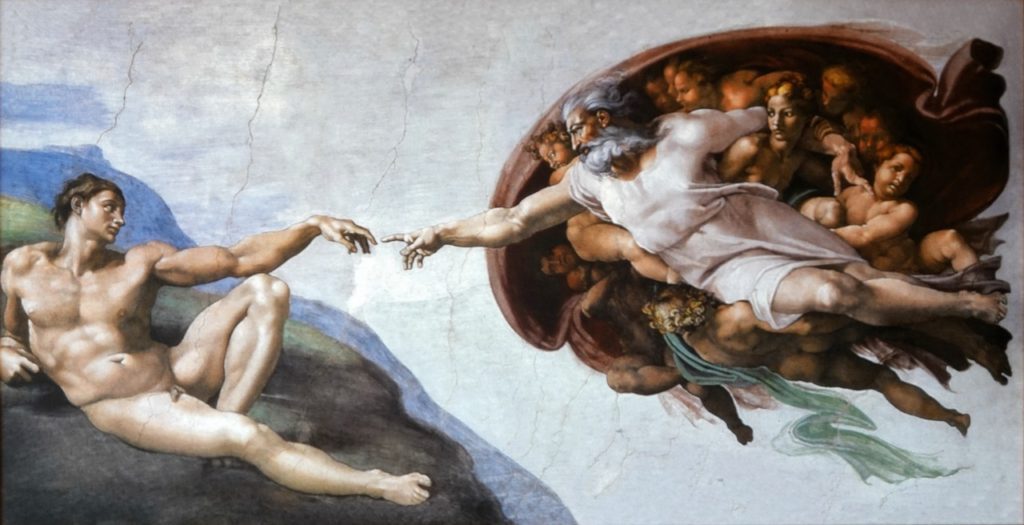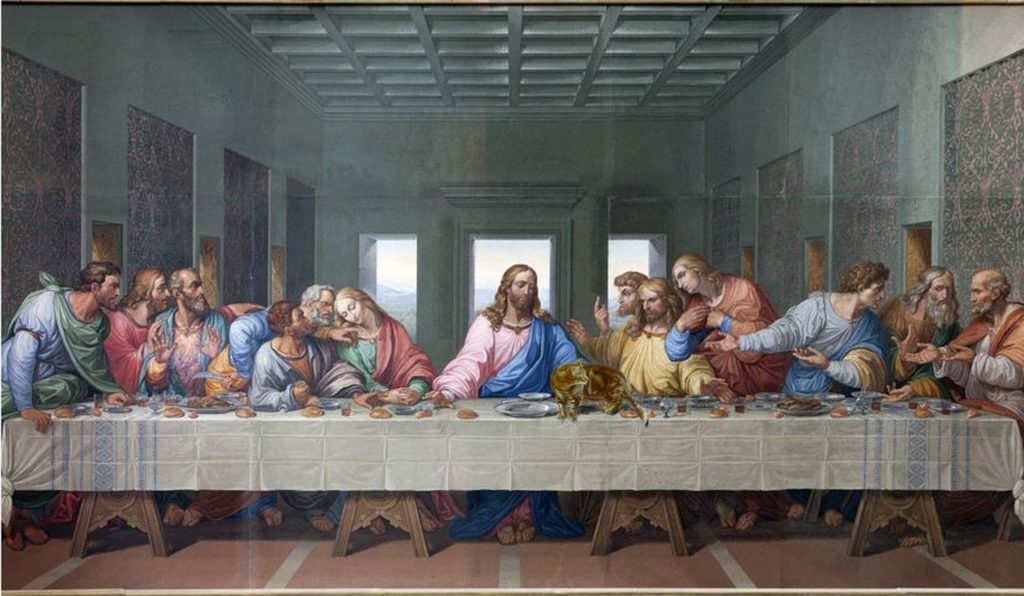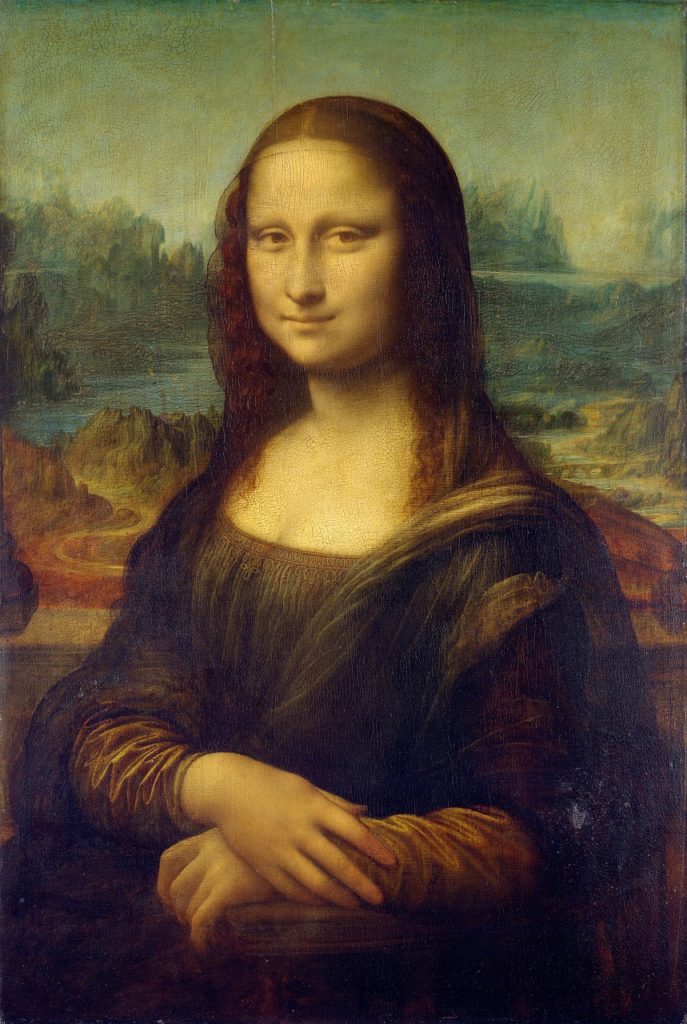The Renaissance marked a revival of interest in the art and culture of ancient Greece and Rome. Renaissance artists looked to the classical period for inspiration. The most famous renaissance paintings are important marks in our cultural revolution and adaptation to our worldly perspective.
Renaissance paintings reflect the cultural and social changes that took place during the period. They explored secular subjects, mythology, and portraits, reflecting the expanding interests and values of Renaissance society. These paintings became symbols of wealth, power, and cultural refinement, shaping the visual identity of the time.
This post covers an in depth look at five of the most famous renaissance paintings. For a quicker, lengthier list of the most famous renaissance paintings, check out the artist’s page.
What do Renaissance Paintings usually consist of?
Renaissance artists began to pay more attention to the natural world and the representation of landscapes. They depicted idyllic scenes with rolling hills, rivers, and meticulously rendered details of flora and fauna. Landscape elements often served as backdrops to the main subjects of the painting or as settings for narrative scenes.
Although not as prevalent as other subjects, still life paintings also emerged during the Renaissance. These works depicted inanimate objects such as flowers, fruits, tableware, or musical instruments. Still life compositions showcased the artist’s technical skill in rendering textures, light, and reflections.
The School of Athens

“The School of Athens” is a famous fresco painting created by the Italian Renaissance artist Raphael between 1509 and 1511. It is one of Raphael’s greatest masterpieces. It is located in the Vatican’s Apostolic Palace in Vatican City.
The painting depicts a grand gathering of prominent philosophers, scholars, and intellectuals from different historical periods. They all are placed within a magnificent architectural setting. The scene is set in an imagined classical architectural hall, adorned with arches, vaults, and statues, creating a sense of grandeur.
I personally know this painting to be remarkable for its use of depth perception. Before the Renaissance, depth was not taken into account to bring more lifelike of characteristics to artwork.
Key figures in the painting include:
- Plato: Depicted as an older man with a white beard, gesturing upwards, and holding his work “Timaeus.”
- Aristotle: Shown as a younger figure standing next to Plato, with a more contemplative gesture towards the viewer and holding his book “Ethics.”
- Other Ancient Greek Philosophers: The painting includes various notable philosophers from antiquity, such as Socrates, Heraclitus, Diogenes, Pythagoras, Euclid, and Epicurus.
- Renaissance Figures: Raphael also incorporated contemporary figures from his time into the painting, representing influential individuals from the Renaissance period. Among them are Michelangelo (identified by his muscular form), Leonardo da Vinci (depicted in profile), Bramante (the architect of St. Peter’s Basilica), and Raphael himself.
The composition of the painting is carefully organized. It has a central vanishing point that draws the viewer’s attention to the figures. Also, Raphael employed perspective and scale to create a sense of depth and spatial coherence within the architectural space.
“The School of Athens” embodies the humanistic ideals of the Renaissance, emphasizing the pursuit of knowledge, the harmony between classical thought and Christian theology, and the celebration of wisdom and intellectual achievement.
Annunciation

“The Annunciation” painting is a collaborative work between Andrea del Verrocchio and his apprentice, Leonardo da Vinci. Verrocchio was a renowned Florentine artist and Leonardo da Vinci, one of the most famous artists of the Renaissance, began his artistic career as Verrocchio’s apprentice. They both created the most famous renaissance paintings. The artwork is believed to have been created around 1472-1475.
The scene takes place in an architectural setting, with meticulously rendered details, such as the tiled floor and the intricately carved columns.
Also, it exemplifies the artistic style of the Florentine Renaissance, showcasing attention to detail, naturalistic representation, and a sense of harmony and balance. Leonardo’s contribution to the work is evident in the angel’s soft, ethereal appearance and the delicate handling of drapery.
Here are some of the notable elements:
- Angel Gabriel: The painting depicts the angel Gabriel on the left side of the composition. Gabriel is portrayed with elegant and graceful gestures, conveying a sense of otherworldliness. The angel’s pose and expression exude a sense of reverence and importance.
- Virgin Mary: The Virgin Mary is depicted on the right side of the composition. She is shown in a humble and contemplative posture, often with her hands folded in prayer or held in a gesture of acceptance. Mary’s expression reflects a mix of awe, humility, and acceptance of the divine message.
- Symbolic Objects: “The Annunciation” often includes symbolic objects to convey the story’s significance. These may include a lily, symbolizing Mary’s purity, or a book, representing the Scriptures or the Word of God. These objects contribute to the overall symbolism and narrative of the painting.
The Creation of Adam (and the ceiling of the Sistine Chapel as a whole)

The Sistine Chapel ceiling is one of the most famous and iconic artistic achievements of the Italian Renaissance. It is also one of the largest most famous renaissance paintings. The art is located in the Sistine Chapel, a chapel within Vatican City. It was painted by Michelangelo between 1508 and 1512.
Michelangelo used pigments mixed with water to create his paint. Therefore, he painted directly onto the wet plaster, known as buon fresco technique, allowing the pigments to bond with the plaster as it dried. Also, colors were applied in thin layers, allowing for gradual buildup and subtle transitions.

The ceiling of the Sistine Chapel is a vast fresco. It is composed of multiple panels and scenes depicting various biblical narratives and themes.
Here are some key elements and notable sections of the Sistine Chapel ceiling:
- Creation Scenes: One of the most well-known sections is the Creation of Adam. It depicts the moment when God breathes life into Adam, creating the first man. This scene has become an iconic symbol of human creation and divine intervention.
- The Last Judgment: On the wall behind the altar, Michelangelo painted the monumental Last Judgment fresco. This depicts the final judgment of souls by Christ. This powerful and dynamic composition showcases a multitude of figures. This includes saints, angels, and the damned, representing the culmination of human destiny.
- Old Testament Stories: The ceiling also features numerous panels illustrating stories from the Old Testament, such as the Creation of the Sun and Moon, the Fall of Man, the Flood, and the Sacrifice of Noah. These scenes represent key moments in biblical history.
- Prophets and Sibyls: Along the edges of the ceiling, Michelangelo painted figures of prophets from the Old Testament and sibyls from classical antiquity. These majestic and larger-than-life figures represent the anticipation and prophecy of the coming of Christ.
- Architectural Framework: Michelangelo incorporated architectural elements into the ceiling composition to create the illusion of three-dimensional space. The painted architectural features, including columns, arches, and decorative motifs.
The Last Supper

“The Last Supper” is a renowned painting by Leonardo da Vinci, second only to the Mona Lisa. The famous renaissance painting was created by the Italian artist Leonardo da Vinci between 1495 and 1498. It is considered one of his most famous and influential works.
The painting depicts the biblical event known as the Last Supper, which commemorates Jesus Christ’s final meal with his twelve apostles before his crucifixion. Leonardo’s composition shows a large table with Jesus seated in the center, surrounded by his disciples. Additionally, he uses linear perspective to create depth, drawing the viewer’s attention to the figure of Jesus. Additionally, the apostles are divided into groups of three on each side of Jesus.
Instead of painting directly on wet plaster (fresco technique), Leonardo opted for fresco-secco. This technique allowed him more time for intricate details and corrections compared to traditional fresco painting.
Here are the main subjects in the painting:
- Jesus Christ: Jesus is the central figure in the composition. He is seated in the middle of the table, with his body and head slightly inclined towards the viewer. His figure is calm and serene, and he is depicted with a halo, symbolizing his divinity.
- The Twelve Disciples: The painting showcases the twelve apostles of Jesus who were present at the Last Supper. They are positioned in groups of three on each side of Jesus. Each disciple has distinct features, expressions, and gestures that convey their individual personalities and reactions to Jesus’ announcement.
- Judas Iscariot: Judas, the apostle who would later betray Jesus, is depicted separately from the other disciples. He is shown seated on the same side as Jesus but in a shadowed area. He holds a small bag, which is traditionally associated with the thirty pieces of silver he received as payment for his betrayal.
- Narrative Elements: The painting includes various narrative elements related to the Last Supper event. This includes the bread and wine on the table, symbolizing the Eucharist, which is central to the Christian sacrament of Holy Communion. The emotional reactions and interactions among the disciples also contribute to the storytelling aspect of the painting.
Mona Lisa

The Mona Lisa, also known as La Gioconda, was painted by the Italian artist Leonardo da Vinci. This might be the most famous painting ever created.
The painting shows a seated figure positioned in front of a landscape backdrop. Leonardo da Vinci employed his mastery of techniques in the painting. Also, he used thin layers of oil glazes to achieve smooth transitions and soft, delicate blending of colors, a technique known as sfumato. This gives the painting its characteristic atmospheric and ethereal quality.
Additionally, the subject is seated in a three-quarter view, with her upper body turned slightly towards the viewer. Also, her gaze is directed at the viewer, creating an engaging and intimate connection. Here are some key elements:
- Lisa Gherardini : The painting depicts a half-length portrait of a woman, believed to be Lisa Gherardini, a Florentine woman from a merchant family. She is often referred to as Mona Lisa, meaning “Lady Lisa” in Italian.
- Facial Expression: One of the most famous aspects of the Mona Lisa is her enigmatic smile. The smile is subtle, with slight variations as one moves around the painting, giving an impression of both happiness and mystery. It has sparked endless speculation and fascination among viewers.
